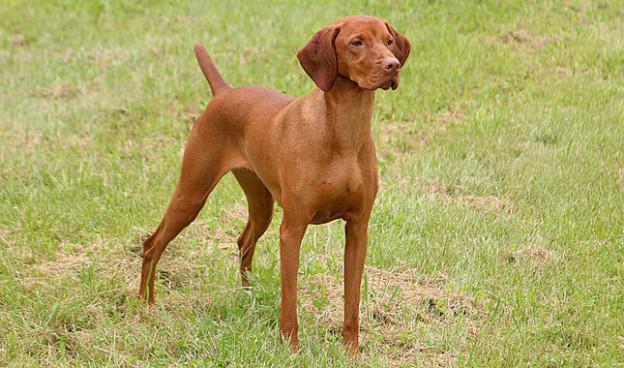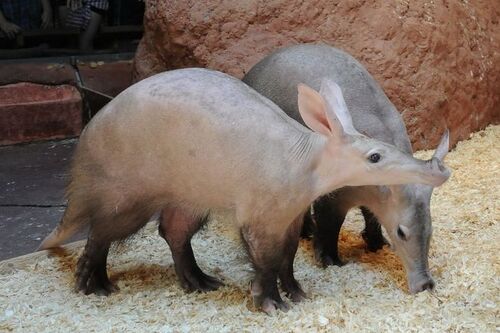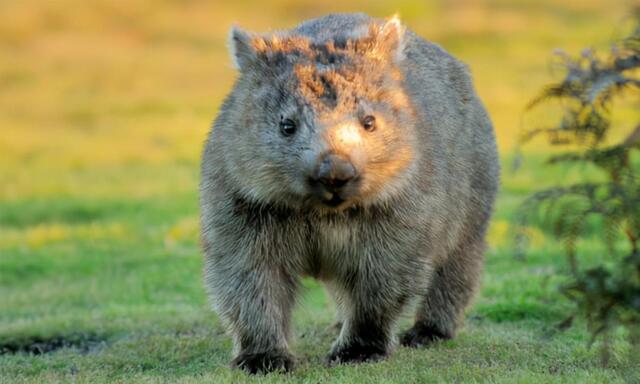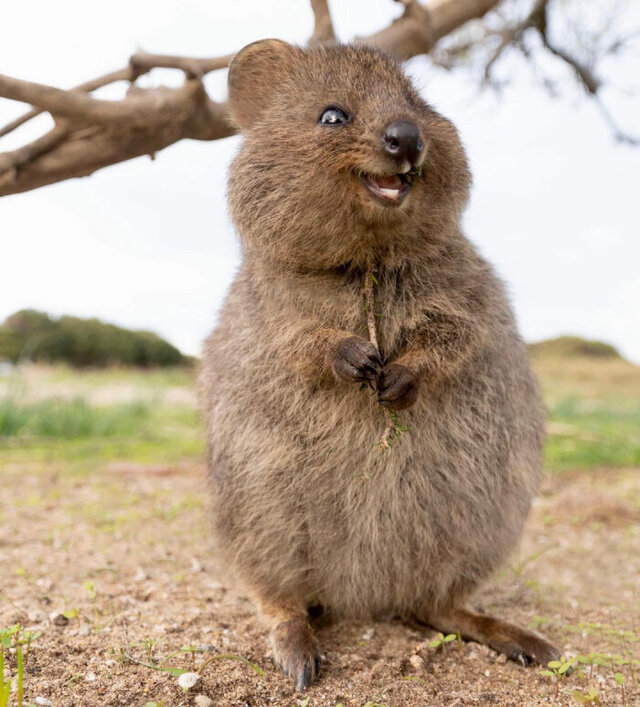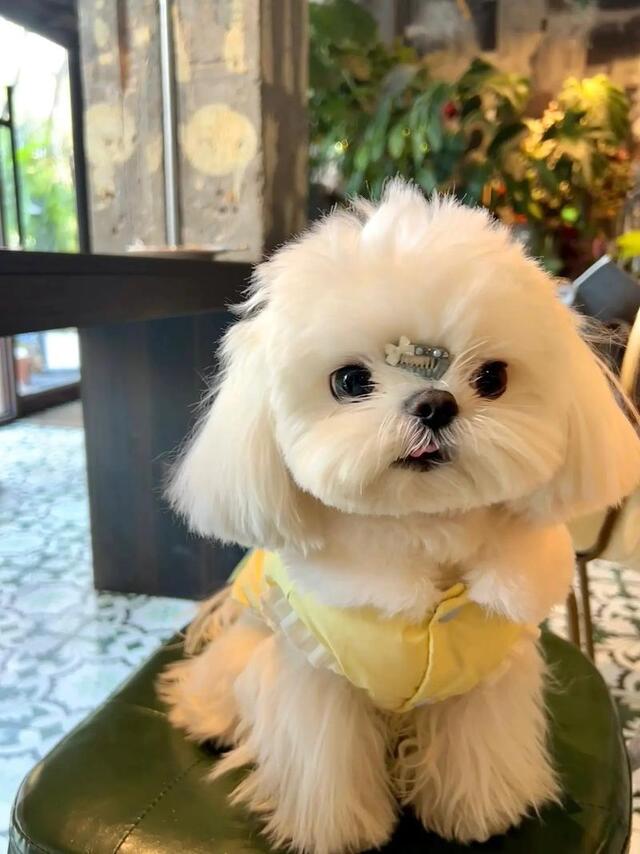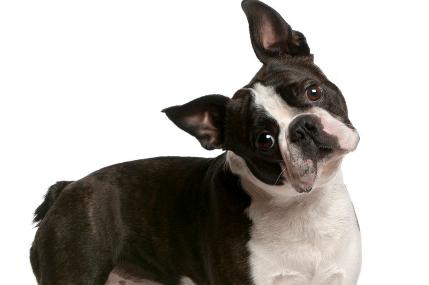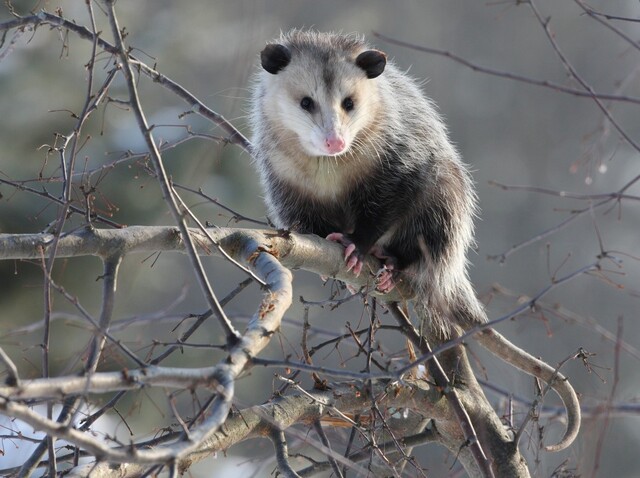Blue Heeler
IUCN
LCBasic Information
Scientific classification
- name:Blue Heeler
- Scientific Name:Australian Queensland Heeler、Blue Heeler、Red Heeler
- Outline:Rodents
- Family:R.Heeler B.Heeler Q.Heeler
Vital signs
- length:43-51cm
- Weight:16-20kg
- lifetime:15-29years
Feature
Strong physique, versatile working ability, alert and resourceful character, as well as its love of work and loyalty. Personality traits include alertness, resourcefulness, courage and honesty. They are wary of strangers but absolutely loyal to family members.
Distribution and Habitat
Originated from Australia. This dog breed has adapted to the wild and remote living environment of Australia, especially in the Australian interior, where they are mainly engaged in the task of guiding cattle over long distances. Australia's vast areas of subtropical desert climate and tropical savannah climate, as well as the flat, open and arid characteristics of the central plains, provide an ideal living and working environment for the Australian Cattle Dog. It has become a good helper for farmers to drive cattle, and can control cattle in the most precise and labor-saving way, thus playing an important role in Australia's animal husbandry.
Appearance
It is a strong, versatile and well-proportioned working dog. Its appearance characteristics mainly include:
Body: Male dogs are between 46 and 51 cm tall, and female dogs are between 43 and 48 cm tall. Weight is between 16 and 20 kg.
Head: The head is strong, balanced with the overall body, and the structure is symmetrical. The cheek muscles are well-developed, and the jaw is strong, deep, clear and wide. The ears are slightly arched, and the eyes are oval, medium-sized, showing an alert and intelligent look.
Ears: Medium size, wide at the base, erect, and pointed at the end.
Hair: The coat is smooth, double-layered, with a short and dense undercoat, and the outer coat is tight and straight, lying hard and flat on the body and can protect against rain. The hair under the body to the back of the legs is slightly longer. The coat color is mottled blue, blue spots, red spots, and there are black, blue or brown markings on the head.
Tail: The tail is set on slightl
Details
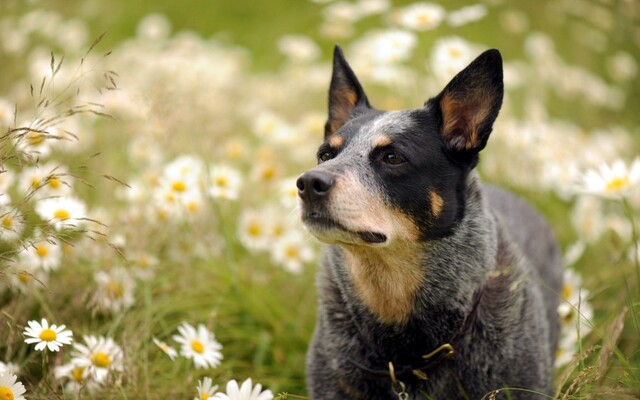
Australian Cattle Dog, also known as Cattle Dog for short, is also known as Queensland Heeler, Blue Heeler, Australian Cattle Dog, Queensland Heeler, and Australian Cattle Dog in Chinese. Originated from Australia, it is a breed of sheepdog bred for driving cattle over long distances. The Australian Cattle Dog is the creator of the 29-year longevity record of dogs.
Australian Cattle Dogs are energetic, enduring, versatile, smart, and very independent. Cattle Dogs only respond well to structured, interesting, and challenging training. In the Australian interior, Australian Cattle Dogs are mainly used to guide cattle over long distances, and they also need to adapt to the living environment in the wilderness and control the cattle in the most precise and labor-saving way.
Historical Origin
The origin of the Australian Cattle Dog is relatively complicated. There is an endangered blue heeler in the UK. They drive sheep and cattle on the dock onto the ship by biting the front and rear limbs of livestock. There are many different opinions about the origin of the Australian Cattle Dog, but it is very similar to this short-tailed dog.
In the 19th century, an Australian pioneer named Thomas Smithao needed to breed a dog similar to this dog, and at the same time required such a dog to be strong and sturdy to overcome the difficulties faced when driving cattle. The blue spotted Highland Collie was introduced from the UK and mated with the local dingo, which was selected to crawl and quietly catch food. This breed is very similar to the current Australian Cattle Dog. This dog is very alert, so training should be strengthened at an early age.
The breed is a hybrid of many different breeds of ancestors. Including the Australian Dingo, Highland Collie, Dalmatian, Australian Corby, Old English Sheepdog, etc. The most important of these is the Australian Dingo, and the Haller Heeler was later further developed by brothers Jack and Harry Bagster of Sydney in the 1880s, eventually forming the modern Australian Cattle Dog and Australian Tailless Cattle Dog. The Bagster brothers successfully shaped the characteristics of this breed through extensive breeding and elimination. The Australian Cattle Dog is called the "Red Heeler" or "Blue Heeler" because of its coat color and its instinct to drive cattle. In addition, the nickname "Queensland Heeler" may come from a popular pamphlet published in Victoria. The Australian Cattle Dog is the creator of the 29-year longevity record for dogs. The average lifespan is 14 years, which shows its long lifespan compared to the average lifespan of other purebred dogs of 12.7 years and the average lifespan of mixed breeds of 12 years. Many Australian Cattle Dogs are still active at the age of 12 to 14 years, and some dogs still have good eyesight, hearing and dental health before they die.
Physical characteristics
The Australian Cattle Dog is a sturdy, muscular and compact, versatile and well-proportioned working dog. It has solid, powerful, well-proportioned and muscular features, showing the characteristics of agility, strength and tenacity.
Height: Male: 46-51 cm, Female: 43-48 cm.
Weight: 16-20 kg.
Appearance
Head
The head is strong, balanced with the body, well-proportioned; it has a broad skull, from the flat part between the eyes to the pronounced stop, with well-developed cheek muscles, strong, deep and very clear jaws. The ears are slightly arched, proportional and balanced with the rest of the body. The cheek muscles are strong, but neither coarse nor obviously prominent. The lower jaw is strong, thick and well developed. The front face is wide and connects well below the eyes. The muzzle tapers to a medium length, thick and strong. The lips are tight and clean. The muzzle is of moderate length, deep and strong, the nose is black, the same color as the body, and the neck and shoulders are strong and powerful.
Teeth: Sound and strong, regularly arranged, meeting in a scissor bite, the lower incisors closing back to touch the upper incisors, and the teeth protruding neither in nor out.
Eyes: The eyes are oval, medium in size, neither protruding nor sunken, and are alert and intelligent. The alert and curious look is characteristic. The color is deep, dark brown.
Ears: The ears are medium in size, with small ears being better than large ears. The ears are widely spaced, muscular, erect, and moderately pointed (neither spoon-shaped nor racket-shaped). When they are used, the ears are expanded at the base, moving downward and outward, and when alert, the ears are erect. The inside is moderately feathered.
Forequarters: The shoulders are broad and slightly sloping, strong and angular above the arm bone; the forelegs are strong and rounded, extending to the feet. When viewed from the front, the legs are straight, but the palms are at a certain angle to the forearms.
Hindquarters: The hindquarters are broad, strong and muscular. The croup is long and has a certain slope. The legs are long and well developed, with a good bend at the stifle and strong hocks. When viewed from the rear, the hocks are in a straight line with the feet.
Chest: Deep, muscular, and of moderate width. Loin: Broad, strong, muscular, with deep flanks. Feet: Rounded, with short, strong, well-arched, and compact toes. The pads are hard and thick, and the claws are short and strong.
Tail: The tail is set on slightly low, extending from the sloping contour of the croup to about the hock. When at rest, the tail hangs straight and slightly curved. When in motion or excitement, the tail is raised and the tail is in a beautiful brush shape.
Color: Mottled blue, blue spots, red spots, with black, blue or brown markings on the head. The coat is smooth and double-coated. The undercoat is short and dense, and the outer coat is close, all hairs are straight, hard, lie flat on the body, and can protect against rain. The hair under the body to the back of the legs is slightly longer.
Gait: The expression is alert and sharp. Physical soundness is the most important. The movement is appropriate, free, gentle and persistent. The shoulders and front face should be coordinated with the propulsion of the hind legs. Quick movement and explosive power are essential for this dog. Shrugging shoulders, carrying weight, loose shoulders or shoulders that are too straight, elbows and hocks that are arched or loose paws, and straight and hard stifles are all considered serious faults.
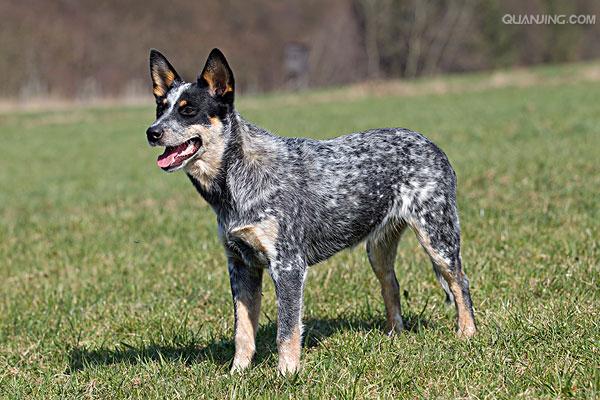
Lifestyle
The alertness, intelligence, guarding ability, courage, honesty, and absolute loyalty to duty of the Australian Cattle Dog make it an ideal working dog. Its loyalty and protectiveness are invaluable to the rancher, the cattle, and the property. Suitable for all climates. The Australian Cattle Dog matures sexually at 12 months. It estrus twice a year, in February and August, and produces an average of three to five pups per litter.
Characteristics and Uses
The alertness, intelligence, guarding ability, courage, honesty, and absolute loyalty to duty of the Australian Cattle Dog make it an ideal working dog. This dog is very alert and known for its strong bite force. It is not suitable to be kept as a family pet dog.
How to keep it
Shower
Known as a "wash and wear" breed, it can remove old dandruff that accumulates on its skin. You don't need to be too active in bathing. Basically, you can bathe it once every two weeks in the summer and once a month in the winter. Be careful. Bathing too frequently may damage the oily protective layer on the dog's hair. It needs relatively little daily combing. Use lukewarm water when bathing, be careful to avoid the eyes, and remember to blow dry the dog's damp hair at the end. This dog only sheds during the annual shedding season. Unneutered females may shed twice a year. This feature makes the Australian Cattle Dog a relatively easy-to-care pet.
Special shampoo
If ordinary shampoo cannot effectively remove dandruff, you should choose a special anti-dandruff shampoo containing a variety of special ingredients. Never use human anti-dandruff shampoo to bathe your dog to avoid greater irritation.
If your Australian Cattle Dog has severe dandruff, it is best not to use shampoo containing lice-killing ingredients to bathe them. Such products will most likely make the skin drier.
Hair spray
If the environment in which your Australian Cattle Dog lives is dry, it may also cause a lot of dandruff. You may want to go to a pet supply store to buy some oily hair spray. After spraying it on the hair, it can effectively prevent excessive evaporation of moisture on the dog's hair.
Moisturizing oil
Products generally used to care for babies' skin can also moisturize the Australian Cattle Dog's fur.
Combing
Regularly combing your Australian Cattle Dog's hair can brush off the old dandruff and dead hair that accumulates on a daily basis, and can also help the dog's skin
The secreted natural oil is evenly distributed on every inch of the skin. As long as you comb the hair frequently, many dandruff problems can be solved naturally.
When choosing a comb, pay attention to whether the teeth are too hard. You can try it with the back of your hand. If it hurts, your dog will probably feel the same way. In fact, the tooth combs used by people to comb their hair are very suitable for dogs. You can also choose a special pet grooming comb.
Add fish oil
One reason for the increase in dandruff may also be that the food eaten by Australian cattle dogs does not contain enough oil. Therefore, it is a good idea to add an appropriate amount of pet-specific fish oil to the food, which can help the skin restore normal metabolic function. Just add half a spoon or a teaspoon of fish oil every day, and you can see obvious improvement.
Change dog food
Some poor quality feeds cannot meet the nutritional needs of Australian cattle dogs, which will lead to poor hair health. Many dogs will naturally recover from dandruff problems after switching to another more professional feed.
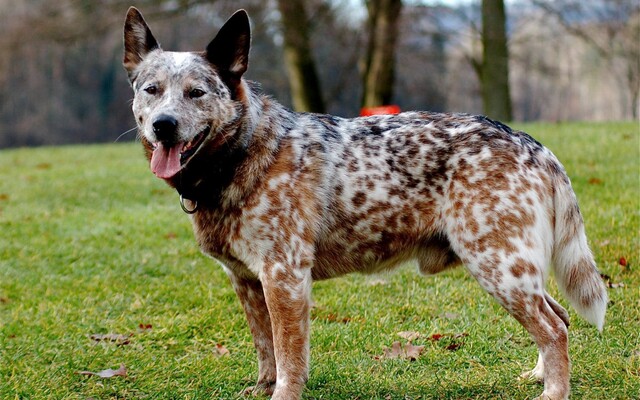
Common health problems
Cattle dogs are more often injured than sick.
Australian Cattle Dogs are associated with congenital hereditary deafness due to recessive white alleles that cause white coat and skin. These genetic deafness associations may be caused by multiple genes acting together. In an Australian study, approximately 10.8% of Australian Cattle Dogs showed deafness in one or both ears.
Progressive retinal atrophy is also a common disease affecting Australian Cattle Dogs. The most common form of this disease is progressive rod-cone degeneration (PRCD), which causes the degeneration of rods and cones in the dog's later years, eventually leading to blindness. PRCD is an autosomal recessive trait, and dogs may carry the gene for the disease without showing symptoms.
Hip dysplasia is uncommon in Australian Cattle Dogs, but it occurs frequently enough for breeders and dog owners to conduct specialized radiological screening for possible pelvic problems. In addition, Australian Cattle Dogs may suffer from other genetic diseases, such as hereditary poliomyelitis, a rare disease caused by a genetic biochemical defect that usually develops in the first year of life and rapidly paralyzes dogs.
In a survey of 69 surviving dogs, the most common health problems recorded by their owners included musculoskeletal problems (such as spondylosis, elbow dysplasia, and arthritis), reproductive problems (such as pyometra, infertility, and pseudopregnancy), and blindness. [38] A thirty-year study of veterinary schools in the United States and Canada found that the most common diagnosed problems in Australian cattle dogs were fractures, lameness, and anterior cruciate ligament injuries.
The breed standard states that even as a companion or show dog, the dog should be well muscled and symmetrical and balanced in appearance, without any exaggerated size. The dog should not be too slender or too heavy, as this would limit its agility and endurance as a working dog.
Size
In terms of size, the height at the withers for female Australian cattle dogs is approximately 43–48 cm (17–19 in) and for males 46–51 cm (18–20 in). The dog's body should be slightly longer than its height at the withers, and the length from breastbone to hips should be longer than its height at the withers, with a ratio of approximately 10 to 9.
Coat and Color
A puppy with red hair that has not yet grown in
As the puppy grows, the red hair will show through the white coat.
There are two widely accepted coat colors for the Australian Cattle Dog, red and blue. Chocolate and cream are considered breed faults. Blue dogs may be solid blue, blue spotted or blue markings with brown on the legs and chest, and may have white markings on the head and one or two black patches or "masks". Red dogs have evenly distributed red markings with a brown (red) "mask" on the head and sometimes on the body.
Red and blue dogs are born white (unless there are solid body or facial markings), and as they age, the red or black hairs begin to show, starting at about four weeks of age. The distinctive color of the adult dog is formed by an even distribution of black or red hairs with the main white coat. This color distribution is not a mottled effect (which has associated health problems), but is due to the effect of the scatter gene. Scattering is the color that appears in the white area, but the overall effect is determined by other genes that change the size, shape and density of the scatter.
The Australian Cattle Dog's appearance also includes some solid or nearly solid patches. In red and blue dogs, the most common are "mask" markings over the eyes, white on the tip of the tail, solid spots at the base of the tail, and sometimes solid spots on the body, although this is not popular for show dogs. Blue dogs may have brown mid-legs, chest and throat, and brown muzzles and eyebrows. Both color forms may have a white star-shaped spot on the forehead called the "Bentley Mark", which is believed to be a descendant of a dog named Tom Bentley, who was characterized by a white spot on the forehead and a black tail bar. Common miscolors include black hair in red dogs, and too much brown on the face and body of blue dogs, called "spreading brown". The Australian Cattle Dog has a double coat, with the outer guard hairs being short, straight, and protective against the effects of bad weather on the dog's skin, while the undercoat is short, fine, and dense.
Cattle Dog head, alert expression
A Cattle Dog with the left "single mask" and "Bentley markings" (on the top of the head), showing the alert expression typical of the breed.
The "mask" markings are specific spots that appear around the eyes of the Australian Cattle Dog, which are black in blue-coated dogs and red in red-coated dogs. Depending on whether the spots appear in one or both eyes, these markings are called "single mask" (or "half mask") and "double mask" (or "full mask"), respectively. Dogs without any spots on the face are called "pure face". All these mask forms are acceptable according to the Australian Cattle Dog breed standard. In the dog's appearance, even and symmetrical mask markings are usually preferred to uneven markings.
Tail
According to the breed standards of the Australian, American and Canadian Kennel Clubs, the Australian Cattle Dog has a naturally long tail, usually with a solid spot at the base and a white tip. The tail should be carried naturally, in line with the slope of the back, slightly curved when at rest and carried high when excited. In addition, the tail should be well brushed and in good health.
In the United States, working dogs are sometimes docked, but in all Australian states and territories, docking is generally illegal except in special circumstances.
The Australian Cattle Dog and the Australian Cattle Dog share the same ancestry and early history. In the 1930s, the Queensland breed standard described two types of cattle dogs of the breed, long-tailed and short-tailed. The two types were exhibited in different show classes. By 1963, the Australian National Kennel Council clearly distinguished between the two types in its breed standard.
Temperament
In terms of temperament, the Australian Cattle Dog, like many working dogs, exhibits a high degree of energy and intelligence, with a certain degree of independence. According to Stanley Coren's book The IQ of the Dog, the Australian Cattle Dog ranks in the top ten for intelligence in obedience training. Therefore, this dog requires a lot of exercise, human companionship, and work to maintain its physical and mental health. Australian Cattle Dogs in non-working environments should be involved in sports, skill training or other activities to fully exercise and develop their physical and intellectual abilities.
In a family environment, the Australian Cattle Dog is a loving and playful pet. However, it is wary of unfamiliar people and shows natural caution in new environments. This makes the Australian Cattle Dog an excellent watchdog when properly trained. In addition, this dog is friendly with sensible children, but may drive away running and screaming children. By the time puppies are weaned, they should have learned that being around humans is pleasant and that responding to instructions will be rewarded. Australian Cattle Dogs form a deep bond with their owners, and this strong attachment makes them protective of their owners when necessary and usually not too far away from their owners; they respond quickly to their owners' emotions and may respond without waiting.
Australian Cattle Dogs are usually silent when working, but will bark when alert or in need of attention; these barks may sometimes occur due to boredom or frustration, especially if they are raised in a noisy environment. In addition, although they respond well to familiar dogs, in multi-dog environments, Australian Cattle Dogs may need to establish social hierarchies, which may sometimes lead to aggressive behavior, indicating that they are not well suited to living with other dogs.
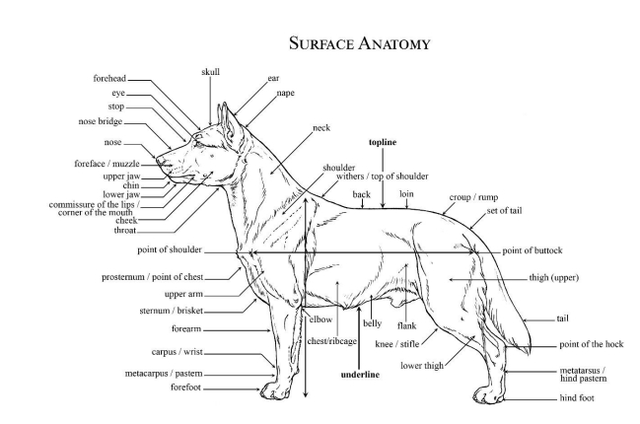
FCI Certification Standards
General Appearance: The overall appearance is that of a strong, compact, well-proportioned working dog, capable and willing to complete the tasks assigned to it, no matter how difficult. Its combination of physique, strength, balance and strong muscle condition must give the impression of great agility, power and endurance. Any tendency to be stout or thin is a serious fault. Important Proportions: The straight line length from the point of the breastbone to the hips is greater than the height at the withers, with a ratio of 10 to 9.
Behavior/Temperament: The Cattle Dog's loyalty and protective instincts make him a self-appointed guardian of his herd, herd and property. Although naturally suspicious of strangers, he must be handled with obedience, especially in the show ring. Any temperament or structural characteristics inconsistent with a working dog must be considered a serious fault. As the name implies, this dog's primary function is to control and move cattle in open and confined areas, a function for which he is unmatched.
Always alert, extremely intelligent, vigilant, courageous and trustworthy, his absolute devotion to duty makes him an ideal working dog.
Head: The head is strong and must be in balance with the rest of the dog and in keeping with its overall structure.
Skull Area:
Skull: The broad skull curves slightly between the ears.
Stop: The skull is slightly flattened, but the stop is distinct.
Facial Area:
Nose: Black.
Muzzle: Broad and full below the eyes, tapering to a medium-length, deep, powerful muzzle, with the skull and muzzle in parallel planes.
Lips: Tight and clean. Jaw/Teeth: The lower jaw is strong, deep and well developed. The teeth should be sound, strong and evenly spaced, meeting in a scissor-like bite, with the lower incisors set close behind and just touching the upper incisors. Sound, strong teeth are very important as the dog needs to drive difficult cattle by heeling or biting.
Cheeks: Muscular, neither coarse nor protruding.
Eyes: The eyes should be oval, medium in size, neither protruding nor sunken, and must show alertness and intelligence. Eye color should be dark brown. When approached by a stranger, they should give a warning or suspicious gleam.
Ears: The ears should be medium in size, preferably small rather than large, broad at the base, muscular, erect and moderately pointed, neither spoon ears nor bat ears. The ears are wide apart on the skull, sloping outwards, sensitive when in use, and erect when alert; the leather is thick and the hair inside the ears is abundant.
Neck: The neck is very strong, muscular, medium in length, integrated with the body, and without a throat.
Body:
Topline: Level.
Back: Strong.
Loin: Broad, strong and muscular. The dog is well-coupled and deep in the loin.
Croup: Fairly long and sloping.
Chest: Deep, muscular and of medium width. Ribs are well sprung and well laid back, not barrel-shaped.
Tail: The tail is set on moderately low, following the contour of the sloping croup and extending approximately to the hock. When at rest, it should hang with a very slight curve. In motion or excitement, the tail may be carried, but in no case should any part of the tail exceed a vertical line through the root. The tail should be brush-like.
Limbs
Forequarters:
General appearance: The forelegs are strongly boned, well rounded, extending to the feet and should be straight and parallel when viewed from the front.
Shoulders: The shoulders are strong, sloping, muscular, well angled to the upper arm, and the point of the withers should not be too close. Although the shoulders are well muscled and well boned, excessive load on the shoulders and heaviness in the front will prevent correct movement and limit working ability.
Metacarpals (Pastace): Viewed from the side, the pasterns should be flexible and slightly angled toward the forearm.
Forefeet: The foot should be round, with short, strong, well-arched and close together toes. The pads are strong and deep, and the nails must be short and strong.Hindquarters:
General appearance: The hindquarters are broad, strong and muscular. Viewed from the rear, the hind legs are straight and parallel from hock to foot, neither too close together nor too wide.
Thigh: Long, broad and well developed.
Stifle: Well turned.
Hock: Strong and well placed.
Hindfeet: The foot should be round, with short, strong, well-arched and close together toes. The pads are strong and deep, and the nails must be short and strong.
Gait/Movement: The action is true, free, supple and tireless, with the movement of the shoulders and forelegs in unison with the powerful thrust of the hindquarters. The ability to move quickly and suddenly is essential. Soundness is essential. When trotting, the feet tend to come closer together on the ground as speed increases, but when the dog stops, it should stand flat and level.
Coat: The coat is smooth, double-coated, with the undercoat being short and dense. The outer coat is dense, with each hair straight, hard and flat, so it is rainproof. The coat is longer under the body to the back of the legs, forming a slight gluteal groove near the thigh. The hair is shorter on the head (including the inside of the ears), the front of the legs and the feet. The hair on the neck is longer and thicker. The coat is too long or too short to be penalized. The average length of the hair on the body should be 2.5 to 4 cm.
Color:
Blue Parti-color: The color should be blue, blue parti-color or blue spots, with or without other markings. The allowed markings on the head are black, blue or tan, preferably evenly distributed. Forelegs tan midsection extending to chest and front of throat, tan jaws; hindquarters, inside hind legs and inner thighs tan extending from front and stifle down to outside hind legs, from hock to toe. A tan undercoat is permissible on the body provided it does not show through the blue outer coat. Black markings on the body are undesirable.
Red markings: The body color shall be uniformly marked with red, including the undercoat (neither white nor cream), with or without dark red markings on the head. Uniform markings on the head are desirable. Red markings on the body are permissible, but undesirable.
Size and Weight:
Height at withers: Dogs: 46 to 51 cm.
Bitches: 43 to 48 cm.
Faults: Any departure from the foregoing points shall be considered a fault, the seriousness of which shall be proportional to its extent and its effect upon the health and welfare of the dog and its ability to perform its traditional work.
Serious Faults
• Carrying, slouching or straightening of the shoulders.
• Weakness in elbows, pasterns or feet.
• Straight stifles.
• Cow legs or bow legs.
• Sluggish movements
Disqualifying faults:
• Aggressive or overly shy dogs.
• Any dog showing obvious physical or behavioral abnormalities.
Notes:
• Male animals should have two apparently normal testicles fully descended into the scrotum.
• Only functionally and clinically healthy dogs with typical breed conformation should be used for breeding.

